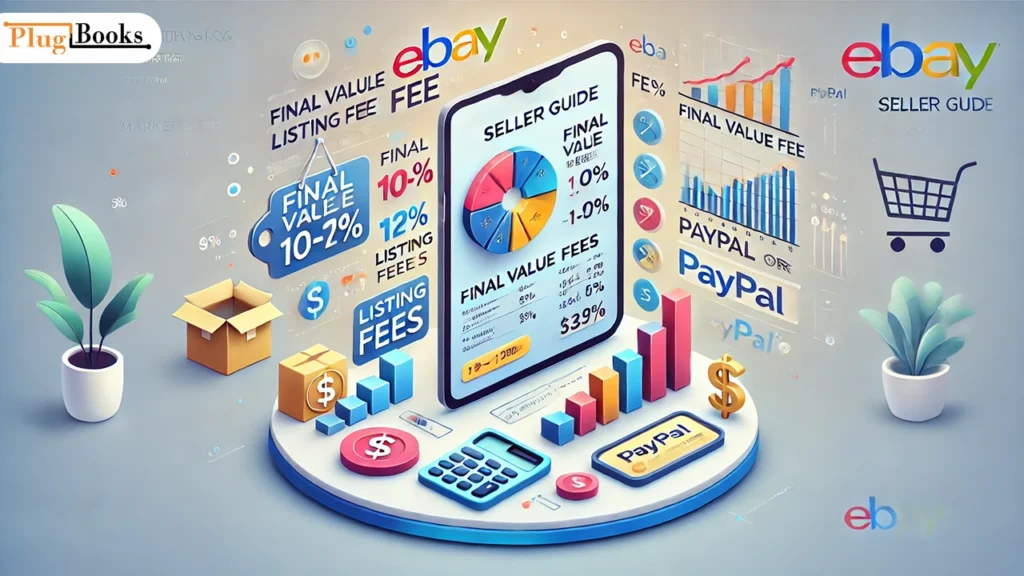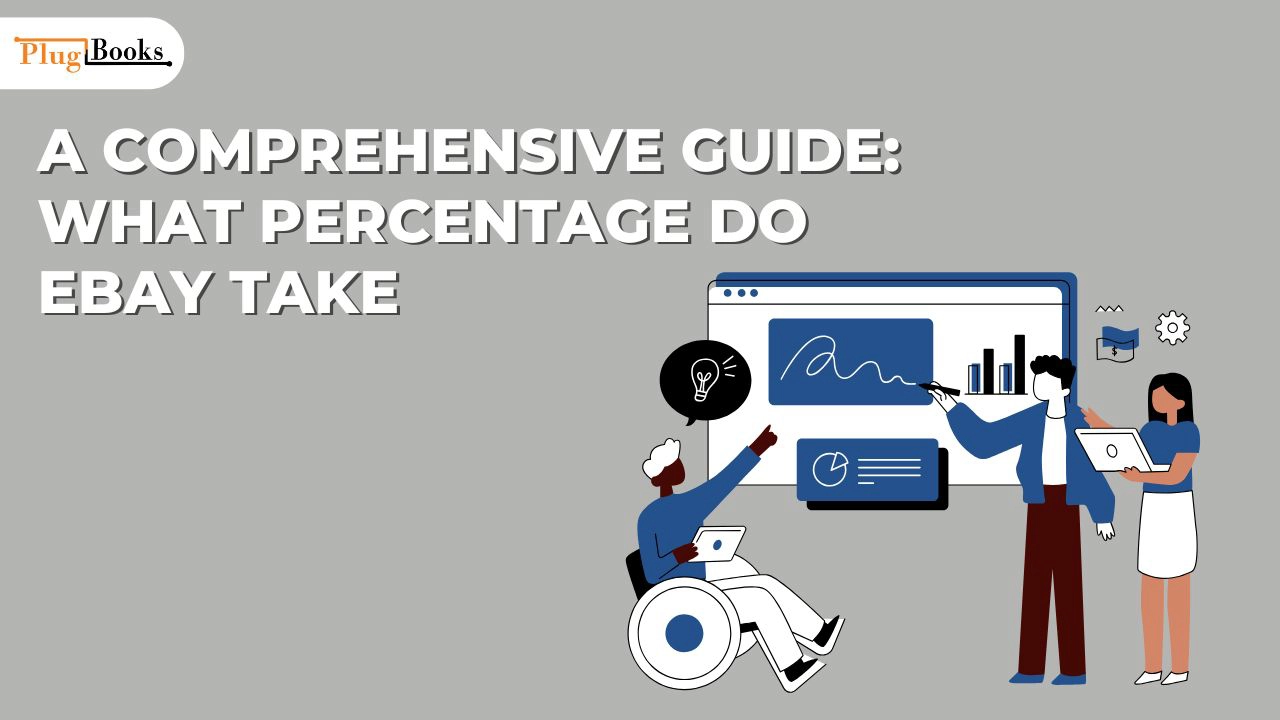If you’re selling on eBay, one of the first questions you probably ask is, “What percentage do eBay take?” Understanding eBay’s fees is crucial for running a profitable online store. Whether you’re a seasoned seller or just getting started, knowing how eBay’s fees are structured can help you price your items accurately and avoid surprises when it comes to payouts.
In this post, we’ll break down everything you need to know about eBay’s fees, including the percentage eBay takes, how different types of sales are affected, and tips on minimizing costs. So, let’s dive in!
What Percentage Does eBayTake from Your Sales?
eBay charges several different types of fees, but the primary one that affects most sellers is the final value fee. This is the percentage eBay takes from the total sale price, which includes the cost of the item and shipping.
The percentage varies depending on the category of the item being sold. Generally, eBay’s final value fee ranges from 10% to 12%, but it can be higher for some categories like electronics, fashion, and collectibles.
For example:
- Fashion items (clothing, shoes, accessories) generally have a final value fee of around 12%.
- Electronics might be closer to 10%.
If you’re unsure of structure for your specific category. eBay also offers promotional rates for certain product categories, so always be on the lookout for deals!
To learn more about eBay seller fees and how they apply to your listings, you can visit eBay’s official fee page here.
How Does eBay Charge Listing Fees?
In addition to the final value fee, eBay also charges a listing fee when you create an auction or fixed-price listing. However, eBay offers 50 free listings per month, which is a great perk if you’re just starting out or testing new products. If you exceed this limit, you’ll pay a small listing fee, usually around $0.30 per listing.
The listing fee is not a percentage of the sale price but is charged upfront, whether or not your item sells. This means if your item doesn’t sell, you’ll still be charged the listing fee, so it’s essential to plan your listings carefully.
For sellers with a high volume of listings, these fees can add up, but they are relatively low compared to other platforms. If you’re planning to list more than 50 items per month, you might want to consider upgrading to an eBay Store subscription. eBay Store subscriptions allow for unlimited listings for a flat monthly fee, which could save you money in the long run.

Are There Any Additional eBay Fees to Be Aware Of?
Beyond listing and final value fees, eBay can charge other fees depending on your selling options:
- PayPal Fees: Although eBay now handles its own payments, if you’re still using PayPal, you’ll face an additional 2.9% + $0.30 per transaction fee for each sale. Keep in mind that this fee is separate from eBay’s final value fee.
- Promoted Listings Fees: If you want your products to stand out, eBay offers a “Promoted Listings” option where you pay a fee to increase visibility. This fee is percentage-based, and you decide how much you’re willing to pay based on a percentage of your sale price. Most sellers pay between 2% and 5% for this service.
- Subscription Fees: If you decide to upgrade your seller account to a Store Subscription, you’ll pay a monthly fee. eBay offers several tiers, ranging from $4.95 per month for a Basic Store to $299.95 per month for a Premium Store. This can be a good investment if you plan to sell a large volume of items.
How to Minimize eBay Fees and Increase Profit Margins
Knowing what percentage do eBay take is one thing, but understanding how to minimize those fees and maximize your profits is essential to success on the platform. Here are some effective strategies to help you reduce fees and increase your profit margins:
1. Use Free Listings
Make the most of eBay’s 50 free listings per month. What Percentage Do eBay Take? is a great way to avoid listing fees if you’re just starting out or only need to list a small number of items each month. To make the most of these free listings, plan your listings carefully to ensure that only your most valuable items are posted, saving you from unnecessary costs. Keep track of your monthly listing allowance so that you don’t exceed it, avoiding the extra $0.30 per listing fee.
2. Consider an eBay Store Subscription
If you plan on listing a lot of items, upgrading to an eBay Store Subscription can help you save money on listing fees. eBay offers several subscription tiers, including Basic, Premium, and Anchor stores. A store subscription provides unlimited free listings, allowing you to list as many items as you want without incurring extra fees.
Additionally, a store subscription gives you access to increased exposure and marketing tools to help boost your sales.
For more details on what percentage do eBay take and eBay Store Subscriptions, you can check out the official eBay page here.

3. Optimize Your Listings
High-quality listings attract more buyers and reduce the need for paid promotions. Here’s how you can optimize your listings:
- Use clear, high-resolution photos: Buyers are more likely to purchase items with professional-looking images.
- Write detailed descriptions: The more information you provide, the more likely buyers will trust your listing.
- Ensure accurate item specifics: Accurate item details improve your search ranking on eBay and increase visibility, which can help you sell faster.
An optimized listing reduces the need for paid promotions and increases the chances of your item being found through organic search. By doing so, you’ll also reduce what percentage do eBay take through ads and promotions.
4. Be Strategic with Promotions
Promoted Listings can help your products gain more visibility on eBay’s platform. While it’s tempting to spend a lot on promoted listings, don’t overspend. Start small by setting a modest advertising budget and evaluate which listings are getting the most traction.
From there, you can adjust your strategy to focus on listings that have the best return on investment. This will help you maximize your profits while minimizing what percentage do eBay take in fees.
5. Leverage eBay’s Promotional Discounts
eBay frequently runs promotional offers, including discounts on final value fees or special seller incentives. Keep an eye on eBay’s seller newsletters and promotional updates to take advantage of these deals. These discounts can significantly reduce the amount you pay in fees and increase your overall profitability.
For more tips on how to save on what percentage do eBay take in fees, visit PlugBooks.io, where we provide resources to help sellers optimize their eCommerce strategies and maximize their profits.
Conclusion
So, what percentage do eBay take? The answer depends on the category of your item, but expect the final value fee to range from 10% to 12%. With listing fees, PayPal fees, and promotional fees, it’s important to understand all the costs involved in selling on eBay. By being strategic about your listings and choosing the right options for your business, you can keep costs low and increase your chances of success.
Now that you know how eBay’s fee structure works, you can better plan your pricing strategy and optimize your online sales. Happy selling!
By keeping these tips in mind, you’ll be well-equipped to navigate eBay’s fee structure and make the most of your selling experience. For more tips on selling online, visit PlugBooks.io, where we provide valuable resources to help you succeed in eCommerce!




